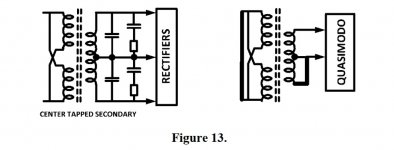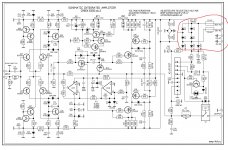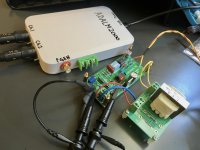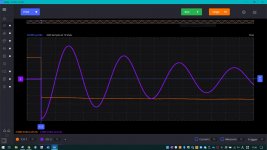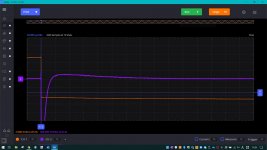Thanks Mark
This is exactly what I want.
I am going to order it from JLCPCB.
Thanks for your thoughtful consideration.
This is exactly what I want.
I am going to order it from JLCPCB.
Thanks for your thoughtful consideration.
When those Gerber files were created and posted, in October 2013, (seven years ago!), I felt there were two PCB fabs who were the cheapest and easiest for DIY builders to use:
At that time, those two fabs required different three-letter file extensions for the various Gerber files within the .zip archive. For example, the board perimeter ("edge cuts") layer needs to be filetype ".GML" for seeed , while it needs to be type ".GKO" for OSH Park. The layer describing drill holes needs to be file type ".TXT" for seeed, and file type ".XLN" for OSH Park.
Seven years ago, I thought it was equally likely that a Quasimodo builder would choose one or the other of these two fabs, so I provided two sets of Gerbers, one compatible with OSH Park and the other compatible with seeed. Every byte of the Gerber files is identical, the only differences are in the file type extensions. But that's what those two fabs required, to successfully build boards in October 2013.
Time has passed and the hobbyist / "maker" / DIY scene has exploded. There are now more than twenty PCB fabs for DIY builders to choose from. The wonderful and excellent website PCBShopper – A Price Comparison Site for Printed Circuit Boards will give you a price quote estimate from many of them, I strongly recommend you use it every time you order boards. It will tell you who is fastest and cheapest TODAY, including special promotional deals and 50% off sales.
In the subsequent seven years, after October 2013, it appears that just about 100% of the PCB fabs in Asia, have chosen to standardize upon the Gerber file naming convention used by seeed. In particular, the three Asian PCB fabs that I myself use most often (JLCPCB, Elecrow, PCBway), all accept seeed style Gerber files. So those are the ones you should send when you order Quasimodo boards, either surface mount (V3) or thru hole (V4).
Another question:
1.Is it correct that if I have a transformer with a common zero input (figure 5), then for normal tuning it is better to assemble 2 pieces of quasimodo?
2. In the picture, the amplifier circuit that I will use, I understand correctly that there are no filters in the circuit in front of the diode bridge and it will be very useful to use a filter selected using a quasimodo CRC?
The transformer is made to order (200 watts) with outputs for 25 and 32 volts, for use with different amplifiers.
1.Is it correct that if I have a transformer with a common zero input (figure 5), then for normal tuning it is better to assemble 2 pieces of quasimodo?
2. In the picture, the amplifier circuit that I will use, I understand correctly that there are no filters in the circuit in front of the diode bridge and it will be very useful to use a filter selected using a quasimodo CRC?
The transformer is made to order (200 watts) with outputs for 25 and 32 volts, for use with different amplifiers.
Attachments
Hello everyone, there is no NTD4906N on mouser
nor IRLB8748
nor IRLU8726
how can they be replaced?
See post #2087
See post #2087
Thank you very much, IRLB8721 can be safely taken, will it work?
Congratulations..Yoshida.
All resistors on the board are 1/4w?
My Quasi is on the way.
All resistors on the board are 1/4w?
My Quasi is on the way.
I built my Quasimodo today.
It seems work fine.
Thank you Mark.
Now I can sleep better.
I built my Quasimodo today.
It seems work fine..
Are those Panasonic (ECWF) capacitors?
My favorites that I always use in such applications.
So sad that the ECQP series disappeared around 10 years ago; that was such a good audio signal capacitor.
My stocks slowly drying up.
Last edited:
I offer complete V4 TH kits, but with US shipping only. Please send me your e-mail address for an invoice.
Hello everyone, sorry if it was already. Does anyone have a list of links for buying the necessary components in the moser? Or maybe part numbers of part numbers? Thank you)
Another question:
1.Is it correct that if I have a transformer with a common zero input (figure 5), then for normal tuning it is better to assemble 2 pieces of quasimodo?
2. In the picture, the amplifier circuit that I will use, I understand correctly that there are no filters in the circuit in front of the diode bridge and it will be very useful to use a filter selected using a quasimodo CRC?
The transformer is made to order (200 watts) with outputs for 25 and 32 volts, for use with different amplifiers.
Where is Mark when he is so needed ...
Would anyone like to offer opinions and advice about these inquiries? {I have made slight edits to the phrasing.} The collective wisdom of the diyAudio readership, vastly exceeds the wisdom of any one person.
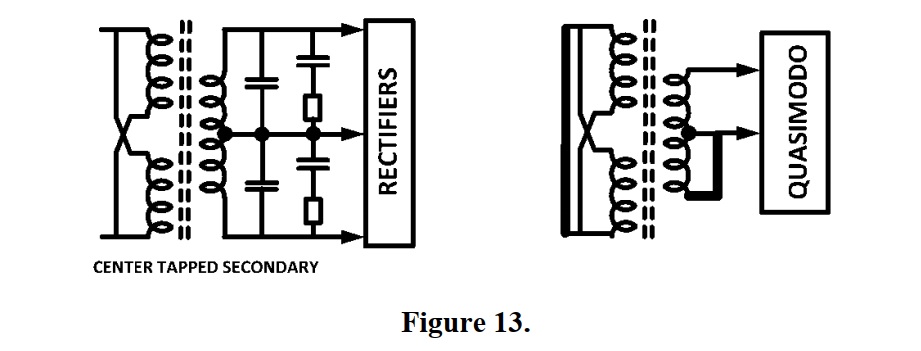
1.Is it correct that if I have a transformer with a center tapped secondary, then for normal tuning it is better to assemble two complete C+RC snubbers? So I need a total of 4 capacitors and 2 resistors?
2. In the original amplifier circuit that I am copying (Creek 5350 mk2), there are no filters and no snubbers in the circuit, between the center tapped power transformer and the diode bridge. Do you think it will be very useful to install two complete C+RC snubbers, selected using Quasimodo tests of my transformer? The transformer is made to order (200 watts) with outputs for 25 and 32 volts, for use with different amplifiers.
Last edited:
Hi Traktorist3d,
While I have little collective wisdom and am not a socialist, I'll have a go:
1. Yes. Yes.
2. Yes.
And it's a fun bit of kit to build and apply, and it saves your calculator batteries. Try it, you'll like it ..
Cheers
Thank you very much), I will collect 2 pieces).
By the way, in the end, how does this setting with the help of Quasimod affect the sound of the amplifier, for example? I never found such reviews.
- Home
- Amplifiers
- Power Supplies
- Simple, no-math transformer snubber using Quasimodo test-jig

